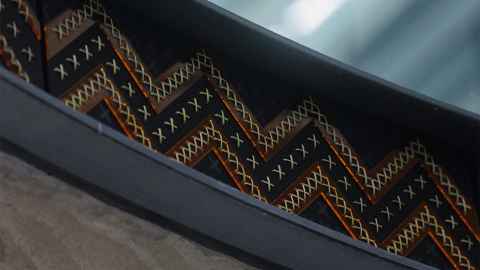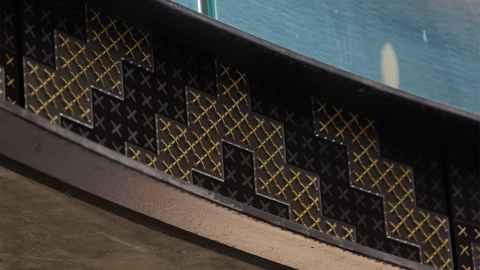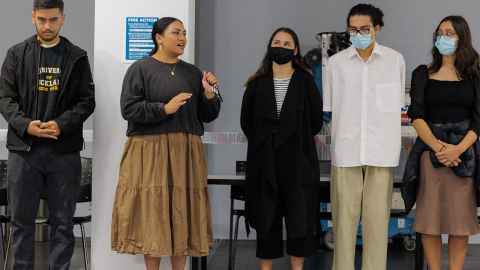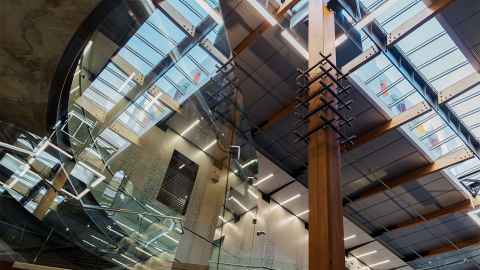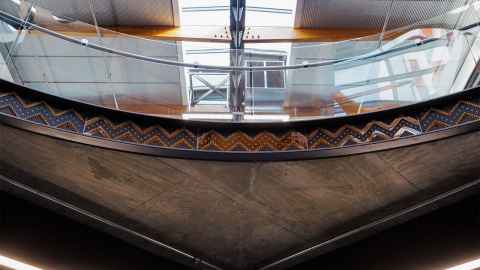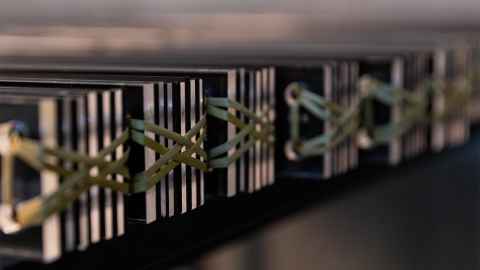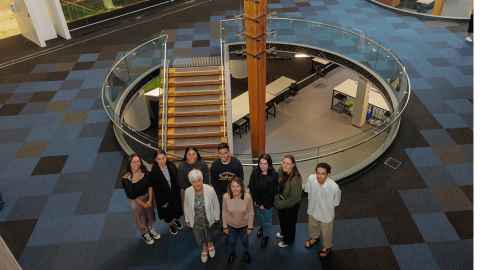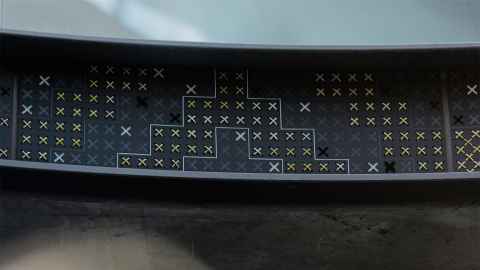Maureen Lander: 'The University still plays a role in my life'
13 May 2022
Weaver and teacher Maureen Lander is one of our distinguished alumni in 2022 and, in her 80th year, is still working with students on campus.
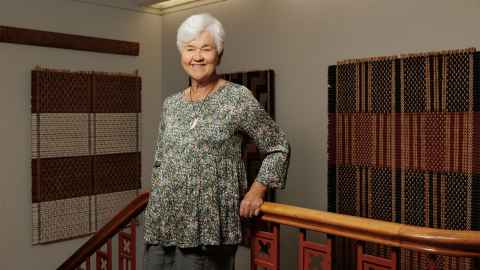
Artist Dr Maureen Lander has been back on campus in 2022, creating an installation artwork for the atrium of Engineering Building 405. The Pou Iho is a collaboration with eight students from Engineering, Architecture and Fine Arts and was commissioned by the University Art Collection.
“Collaborative art-making has persisted in my practice,” says Maureen, who turns 80 this year.
“I’ve worked this way with these students to complete this big project. Our work is inspired by Mere Toka’s tukutuku panels, which I first saw in the Old Choral Hall when I began at the University 40 years ago.”
On 28 April, a dawn blessing was held to present the new artwork, which adorns and surrounds the three pou (support poles) in the atrium space that joins buildings 401 and 405 (bridging the old and new). The work consists of 'ladder' elements that rise up segments of each pou along with panels that sit inside the circular beams surrounding the pou. (See gallery below.)
Maureen has been named a distinguished alumna, after around 40 years as a trailblazing multi-media installation artist, weaver and academic. She has exhibited all over the globe and was the first Māori to receive a Doctorate of Fine Arts, from Elam in 2002. She also won a Te Tohu Toi Ururangi award from Te Waka Toi, for academic excellence.
She was born in Rawene, Northland, (Te Hikutu/Ngāpuhi, Te Roroa) and grew up in Te Karaka, inland from Gisborne, in the 1950s. She trained as a primary school teacher in Wellington and taught until the early 1980s when she returned to study, first as an adult student at Aorere College, then at the University of Auckland. She was the only one of six siblings to go to university, although her father had a Bachelor of Arts from the University – so her becoming a distinguished alumna is special.
“In his old age, I was able to bring Dad back for a visit. He prided himself on being able to pick winners, racehorses mainly, but I don’t think he would have picked this! He’d be very happy.
“I first went to the University to attend Dr Ranginui Walker’s continuing education classes on Māori society before I plucked up courage to enrol in Māori Studies for a BA in 1982. I was accepted for Elam in 1983 and started my Bachelor of Fine Arts (BFA), eventually completing my BA in Māori Studies and Anthropology in 1989.
“In effect, I created my own informal conjoint degree, combining Māori Studies with Fine Arts.”
A lot has changed at the University of Auckland, but most of my favourite places are still there.
Maureen worked in the Anthropology Department as a photographer, then did a Master of Fine Arts, graduating in 1993 before becoming an academic.
“I underpinned my art-making with research into Māori society and material culture, which was quite unusual in the 1980s. There were no Māori art or art history lecturers on staff then, but luckily the timing was right and I had the opportunity to work on the tukutuku for the meeting house, Tāne-nui-a-rangi, under the supervision of master carver Dr Pakaariki Harrison and his wife, Hinemoa.
“In the early 90s, Māori material culture specialist Dante Bonica and I used to take our students to their marae at Kennedy Bay for intensive wānanga, before we got our own workshop, Rua te Whaihanga.”
Maureen first became aware of the beauty of muka – prepared fibre of flax Phormium tenax – for art-making when she saw a korowai by Dame Rangimārie Hetet in Waikato Museum in the late 1970s. When Dame Rangimārie and her daughter Diggeress Te Kanawa set up Te Ōhāki Māori Village and Crafts Centre in Waitomo in 1982, Maureen learned cloak-making skills there. She taught Māori fibre arts for 15 years, completing her doctorate while teaching full-time, then retiring five years later in 2007.
Her guide, Techniques for the Preparation of Flax Fibre by Traditional Māori Methods (1984) is in Special Collections in the University's General Library. She has contributed to many publications and has also created groundbreaking work for landmark exhibitions such as Pasifika Styles at the University of Cambridge’s Museum of Archaeology and Anthropology. Her artist’s installation at the Pitt Rivers Museum in Oxford in 2002, Mrs Cook’s Kete, was a collaboration with former Elam sculpture lecturer Christine Hellyar.
“The University was a big part of my life from my early 40s as a student until I retired from academia at 65. It still plays a role in my life," says Maureen, who now lives in Whangamatā.
“A lot has changed, but most of my favourite places are still there.”
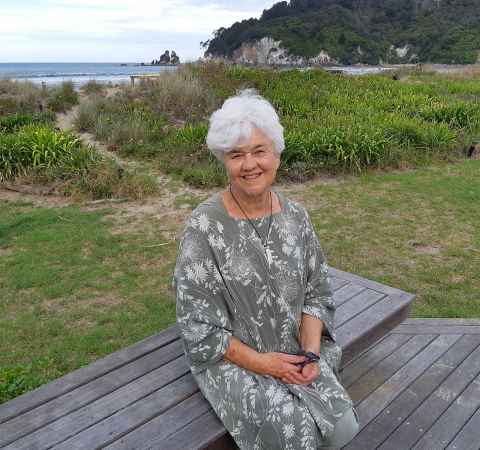
Story for Ingenio Autumn 2022 by Associate Professor Linda Tyler.
Linda holds the David and Corina Silich Associate Professorship in Museums and Cultural Heritage.
